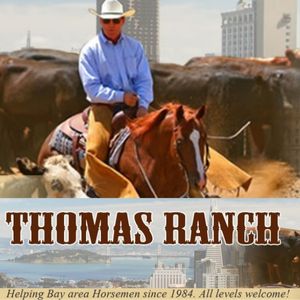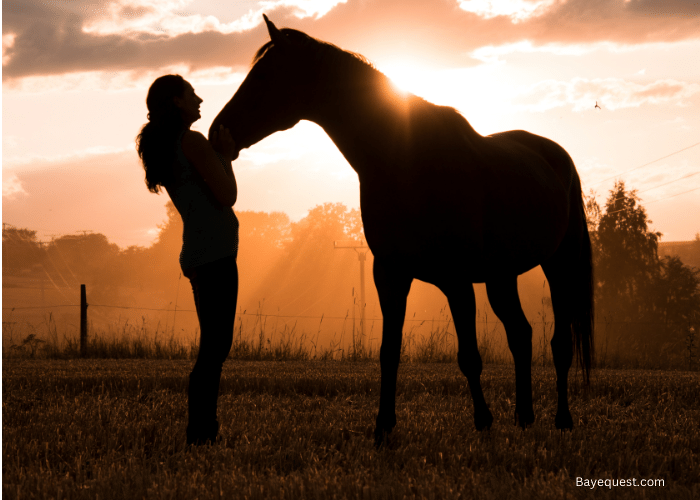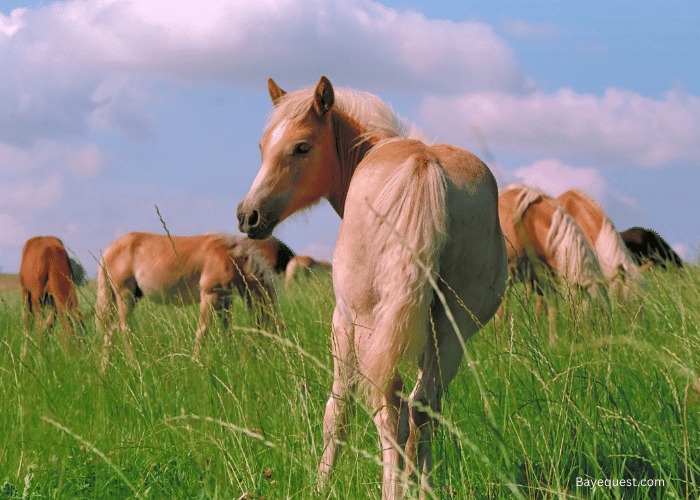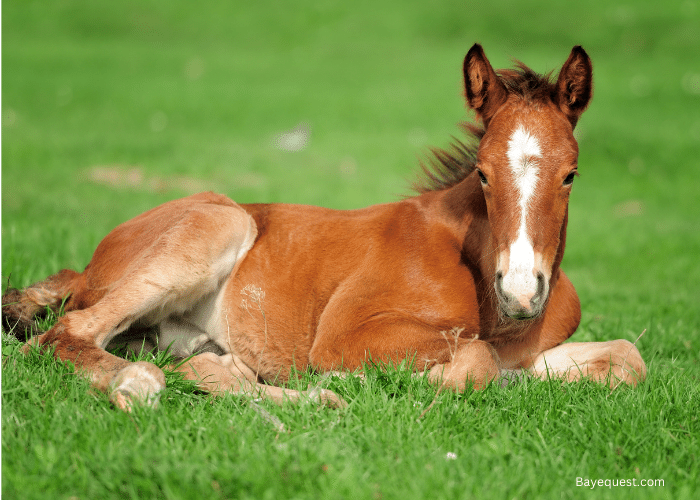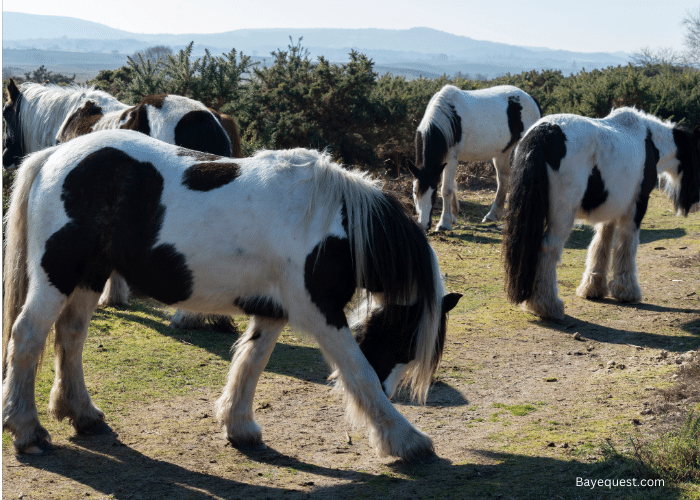Have you ever watched a young horse frolic in the field and wondered just how big that lively foal might get? If you’re like many horse owners or enthusiasts, figuring out when a horse reaches its full size can feel a bit like solving a nature puzzle.
It’s not just about curiosity. Knowing when a horse stops growing can influence a lot of things.
So, grab your riding boots, and let’s embark on a journey through horses’ fascinating growth phases. We’ll unravel the mystery of their development together.
When Do Horses Stop Growing?
When do horses stop growing? It’s a simple question, but the answer isn’t quite as straightforward.
Horses reach their full height by the age of four or five. However, they don’t fully mature until they’re six or seven.
This means that they continue to develop muscle and body mass even after they stop getting taller. Knowing when your horse will stop growing is crucial for horse owners and enthusiasts.
It affects everything from training schedules to nutrition needs. So, let’s explore the growth stages of horses and see how you can support them through each phase.
Horse Growth Cycle
The horse growth cycle is a fascinating journey from foal to adult. Let’s break it down into easy-to-understand stages.
Birth to six months. When a horse is born, it’s called a foal. Foals grow quickly. In just half a year, they can reach up to 90% of their adult height.
Six months to two years. During this stage, growth slows down a bit but remains steady. Proper nutrition during this period supports healthy development.
Two to four years. Horses continue to grow in height until around three or four years old. This is when most breeds reach their full height.
Four to six years. After they reach their maximum height, horses spend the next few years filling out. They gain muscle and body mass, strengthening their bones during this time.
Full maturity. By age six or seven, most horses are considered fully mature. This doesn’t just mean they’ve stopped growing. It means their bodies are fully developed and ready for more intense activities like sports or work.
Emotional Maturity
Emotional maturity in horses is about how they handle their feelings and react to the world around them. Just like people, horses need to learn how to deal with different situations calmly and confidently.
This part of growing up is crucial because a horse that feels stressed or scared often might not eat properly or might even get sick more often. Both of these issues can mess with a horse’s growth.
Think about a young horse that starts training. If the training is done gently and the horse feels safe and understood, it’s likely to be a more positive experience.
This good vibe helps the horse stay healthy and grow strong. On the other hand, if training feels scary or overwhelming, the horse might become anxious. This stress can slow down its growth and even affect its overall health.
So, emotional maturity is about helping horses grow up to be calm and confident. This isn’t just good for their minds but also for their bodies.
Owners and trainers can help horses reach this maturity by handling them with care, patience, and consistency from a young age. This way, horses learn to trust their human partners and face new challenges without fear.
Skeletal Maturity
Skeletal maturity in horses is when their bones have fully developed and stopped growing.
This usually happens around the age of five to six, but it can vary depending on the breed. Larger breeds might take a bit longer to reach this point.
When horses are young, their bones have growth plates. These are areas near the ends of the bones where new bone material forms, allowing the bones to lengthen.
As horses age, these growth plates harden and close up, a process known as ossification. Once these plates close, the bones no longer grow.
Reaching skeletal maturity is a big deal because a horse’s skeleton is strong enough to handle more intense activities. This is why you should not push young horses too hard with heavy training before their bones are ready. Doing so can lead to injuries and long-term health problems.
Understanding when a horse reaches skeletal maturity helps plan the right training and workload.
Stages of Horse Development
| Age | Height and Weight | Bone Development |
| 6 months | Rapid growth, reaching up to 90% of adult height, significant weight gain. | Bones are growing quickly, still quite pliable. |
| 1 year | Growth rate slows but continues steadily. Closer to adult height, significant increases in weight. | Bones start to harden but are not fully developed. |
| 2 years | Near full height, continued weight gain as muscle develops. | Bone growth is nearing completion, stronger but still maturing. |
| 3-4 years | Usually reach full height by the end of this period. Continued increase in muscle mass and body weight. | Bone structure solidifies, reaching full maturity and strength. |
| 5-6 years | Height remains stable, and muscle and body mass fill out fully. | Fully developed and matured bones, suitable for full physical activity. |
Factors Influencing Horse Growth
Now, let’s look at some of the factors influencing the growth of horses.
Genetics
Genetics play a crucial role in a horse’s growth. Just like in humans, genes passed down from parents determine many traits.
These traits include size, muscle composition, and overall health. For example, a foal from two tall breeds, like the Shire or Clydesdale, is likely to be tall too.
On the other hand, a foal from smaller breeds, such as the Arabian or the Morgan, might not grow as large. Genetics also influence how quickly a horse reaches its full size and how well it can handle physical activities.
Nutrition
Nutrition is a key factor in how well and fast a horse grows. A balanced diet ensures a horse gets all the necessary nutrients to develop strong bones and muscles.
For instance, calcium and phosphorus support bone growth, while proteins help build muscle.
If a young horse doesn’t get enough of these nutrients, its growth could be stunted. That’s why proper feeding is essential from birth through the growth years.
Environment
The environment where a horse lives affects its growth. Good living conditions promote better health and, thus, better growth.
Stressful or unsafe environments can lead to health problems that hinder growth. For example, a horse that constantly deals with muddy conditions might develop hoof problems that can affect its overall growth and well-being.
Breed
The breed of a horse greatly influences its growth. Different breeds have different growth rates and mature sizes.
For example, Thoroughbreds and Arabians are generally lean and fast maturing. In contrast, draft breeds like Belgians and Percherons grow larger and mature more slowly.
Understanding breed specifics helps plan the right care and training regimen according to the expected growth and maturity timeline.
Age
Age is a straightforward factor. Horses grow more during their early years.
Most of their height is gained by age three, but they continue to fill in muscle and weight for several more years. The rate of growth slows down as they age.
Young horses need more energy-rich foods to support their rapid growth, whereas older horses require maintenance diets.
Physical milestone
Physical milestones, such as the ability to start training, depend on growth. For instance, lunging and light riding might start when a horse is around two years old, but only if it’s physically ready.
Pushing a horse too hard before it’s mature can lead to injuries and long-term health issues. Observing these milestones and adjusting training accordingly is vital for the horse’s health and development.
The Role of Growth Plates in Determining Maximum Height
Growth plates play a role in determining the maximum height of a horse. These plates, also known as epiphyseal plates, are regions of cartilage located near the ends of the long bones in growing animals.
During a horse’s growth period, these growth plates are active areas where new bone is continuously formed. This process allows the bones to lengthen and the horse to grow taller.
The cells in the growth plate divide and multiply, creating new bone tissue that adds length to the bones.
However, the activity of the growth plates is not indefinite. As a horse ages, these plates gradually ossify, which means the cartilage is replaced by bone.
This transition from cartilage to bone marks the end of the bone’s growth in length. Once all the growth plates in a horse’s skeleton have ossified, the horse has reached its maximum height and will not grow any taller.
The timing of this process can vary depending on the horse’s breed and genetic makeup. For example, smaller breeds often reach full height earlier than larger breeds.
Proper nutrition and health care can also influence the function and longevity of the growth plates, impacting a horse’s final height.
Thus, the growth plates are essential for height growth and determine when a horse will stop growing taller.
Breed Variations in Growth
Horse breeds can vary in their growth patterns, with differences in the rate of growth, final height, and overall maturity timeline. Here’s a comparison of growth variations among different horse breeds:
Thoroughbreds. Thoroughbreds are known for their rapid growth rate, often reaching their full height by the age of three. They tend to mature early compared to other breeds, making them popular racing and performance sports choices.
Quarter horses. Quarter Horses also mature relatively early, with many reaching their full height by the age of three or four. They have a muscular build and are often used in Western riding disciplines.
Draft breeds. Draft breeds, such as Clydesdales and Belgians, grow more slowly and take longer to reach their full height. They continue to fill out and gain muscle mass well into their sixth or seventh year.
Warmbloods. Warmblood breeds fall between Thoroughbreds and draft breeds regarding growth rate and maturity. They generally reach their full height by age four or five and continue to develop muscle and body mass for a few more years.
Ponies. Ponies tend to have a slower growth rate and may not reach their full height until they are five or six years old. They often have a more compact build compared to larger horse breeds. (Read also: Difference between ponies and miniature horses.)
Arabians. Arabians are known for their endurance and stamina. They have a more refined build and may take longer to reach their full height, often maturing closer to five or six years.
When Do Miniature Horses Stop Growing?
Miniature horses reach their full height by the age of three.
However, they may continue to fill out and develop muscle until they are four or five years old. Unlike larger breeds, miniature horses tend to mature more quickly due to their smaller size.
You must provide proper nutrition and care during their growth years to ensure they develop into healthy and well-rounded adults.
Understanding the growth timeline of miniature horses can also help owners plan for their care and training needs as they mature.
Interesting read: Can you ride a miniature horse?
Does Gender Affect Growth Rate?
Yes, gender can affect the growth rate of horses.
Male horses tend to grow slightly taller and larger than female horses. This difference is more pronounced in some breeds than others.
Stallions have a longer growth period than mares, often growing in height and filling out in muscle mass until they are five or six years old.
Conversely, Mares may reach their full height by the age of three or four and tend to mature physically at a slightly faster rate than stallions.
Gender Comparison in Draft Horse Growth Patterns
| Aspect | Mares | Geldings |
| Height | Tend to reach full height by age 3-4 | Tend to reach full height by age 3-4 |
| Muscle Development | Fill out and gain muscle mass early | Fill out and gain muscle mass early |
| Growth rate | May mature physically at a slightly faster rate | May mature physically at a slightly faster rate |
| Growth Plate Closure | Growth plate closure may occur earlier | Growth plate closure may occur earlier |
| Overall size | Generally slightly smaller in stature | Generally slightly larger in stature |
Growth Related Health Issues
When horses grow, especially young ones, they can face several health issues.
One common problem is developmental orthopedic disease, or DOD. This term includes several conditions in which the joints and bones don’t develop properly.
Conditions like osteochondrosis, which involves abnormal cartilage growth, or physitis, where the growth plates in the long bones become inflamed, are examples of DOD.
Another issue to watch out for is angular limb deformities. These happen when a foal’s legs don’t grow straight. If caught early, they can be corrected, often just with proper nutrition and sometimes with medical intervention.
Nutrition plays a huge role in preventing these problems. A diet that’s not balanced can affect how well a young horse’s bones and joints develop. Always monitor their diet and growth closely.
Finally, rapid growth can also stress a young horse’s body, leading to conditions like wobbler syndrome. This is where the spinal cord gets compressed due to vertebrae problems, affecting their coordination and gait.
When is a Horse Grown Enough to Ride?
Deciding when a horse is ready to ride depends greatly on its breed and individual growth. Typically, horses are physically mature enough to start light training around the age of two.
However, most people wait until they’re three or four years old to start more serious riding. This gives the horse enough time for their bones and joints to become strong enough to handle the weight and the stress of carrying a rider.
Also, consider the horse’s mental maturity. Some horses might be big enough to ride at a young age, but they might not be mentally ready. They need to be calm and focused enough to understand and follow commands.
Always check with a vet or a trained professional to ensure your horse is physically and mentally ready for riding.
Is It Safe to Try and Speed Up the Growth of Your Horse?
Trying to speed up a horse’s growth isn’t a safe idea. Pushing horses to grow faster than their natural pace, especially by using high-calorie diets or supplements, can lead to health problems.
Issues like joint disorders or developmental orthopedic disease can crop up, which might cause long-term damage.
It’s much better to let your horse grow at a pace that’s right for them. This means providing a balanced diet that meets their nutritional needs without going overboard.
Regular check-ups with a vet can also help ensure your horse is growing well and staying healthy.
In the end, patience is key when raising horses. Giving them the time they need to grow up strong and healthy can save a lot of trouble and ensure a long, active life.
How Can I Measure My Horse’s Growth?
Measuring your horse’s growth is pretty straightforward and can help you keep track of their development. Here’s how you can do it:
First, you’ll need a weight tape or a regular measuring tape. To check the height of the horse, measure the ridge between the shoulder blades from the ground straight up to the highest point of the withers. This is usually done in hands, where one hand equals four inches.
For the weight, if you’re using a weight tape, wrap it around the horse’s girth, right behind the front legs, over the back, and read the measurement it gives. This won’t be exact, but it’s a good estimate.
You will also need to keep a growth chart. You can note the measurements regularly, like every month, to see how your horse grows over time.
Watching for any sudden changes in growth can also alert you to possible health issues.
By keeping regular track of both height and weight, you can get a good sense of how your horse is developing and ensure they are on the right track.
FAQs
Does gelding a horse stunt his growth?
No, gelding a horse does not stunt his growth. In fact, gelding can sometimes result in a horse growing taller than he might have if not gelded. This is because gelding can eliminate certain hormonal behaviors that might otherwise divert energy from growth.
Will a 3-year-old horse grow anymore?
Yes, a 3-year-old horse may still grow a bit more. Horses generally continue to grow until they are about 4 to 6 years old, depending on their breed. Larger breeds tend to mature more slowly and can grow until they are around 6 or 7.
What promotes horse growth?
Proper nutrition is key to promoting horse growth. A balanced diet rich in essential nutrients like proteins, fats, vitamins, and minerals is crucial. Adequate exercise and a healthy living environment also contribute significantly to normal growth.
How can you tell how big a foal is going to be?
Predicting the exact size of a grown foal can be tricky, but you can get a rough idea by looking at the foal’s parents, especially their height and build. Additionally, measuring the cannon bone can sometimes help predict the mature height of the foal.
How tall should my horse be for my height?
There is no strict rule, but choosing a horse you can comfortably mount and dismount is a good guideline. Most riders find horses between 14.2 and 16.2 hands high comfortable, but it depends on their height and riding ability. The key is to feel balanced and in control when riding.
Conclusion
So, when do horses stop growing? It’s clear that, like us, each horse has its own timeline.
While most horses fill out and reach their full height by age five, some can keep growing until they are seven or older. Keeping track of their growth is not just about measuring tapes and numbers. It’s about understanding and caring for them through every stage of their life.
Remember, the more you know about your horse’s development, the better you can ensure they lead a happy and healthy life. So keep those eyes and ears open—your horse’s growth journey is a unique story waiting to be told.



